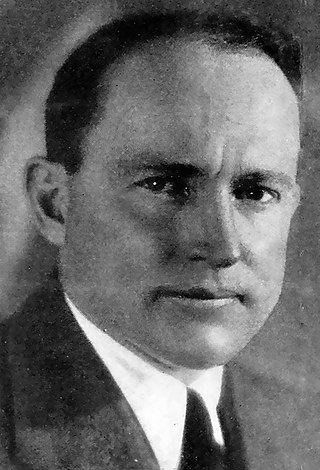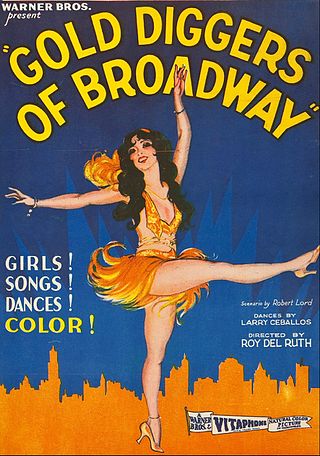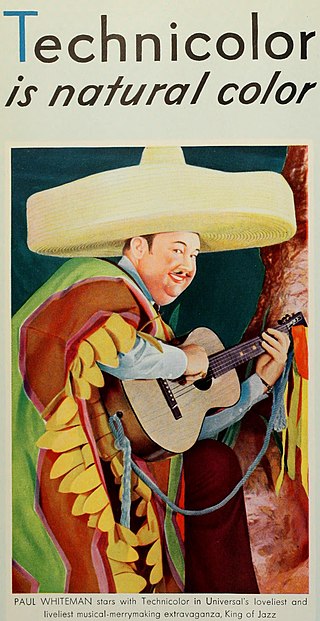Silly Symphony is an American animated series of 75 musical short films produced by Walt Disney Productions from 1929 to 1939. As the series name implies, the Silly Symphonies were originally intended as whimsical accompaniments to pieces of music. As such, the films usually did not feature continuing characters, unlike the Mickey Mouse shorts produced by Disney at the same time. The series is notable for its innovation with Technicolor and the multiplane motion picture camera, as well as its introduction of the character Donald Duck, who made his first appearance in the Silly Symphony cartoon The Wise Little Hen in 1934. Seven shorts won the Academy Award for Best Animated Short Film.

Becky Sharp is a 1935 American Technicolor historical drama film directed by Rouben Mamoulian and starring Miriam Hopkins, who plays the eponymous protagonist. She was nominated for the Academy Award for Best Actress. Other supporting cast were William Faversham, Frances Dee, Cedric Hardwicke, Billie Burke, Alison Skipworth, Nigel Bruce, and Alan Mowbray.

Merian Caldwell Cooper was an American filmmaker, actor, and producer, as well as a former aviator who served as an officer in the United States Army Air Service and Polish Air Force. In film, his most famous work was the 1933 movie King Kong, and he is credited as co-inventor of the Cinerama film projection process. He was awarded an honorary Oscar for lifetime achievement in 1952 and received a star on the Hollywood Walk of Fame in 1960. Before entering the movie business, Cooper had a distinguished career as the founder of the Kościuszko Squadron during the Polish–Soviet War and was a Soviet prisoner of war for a time. He got his start in film as part of the Explorers Club, traveling the world and documenting adventures. He was a member of the board of directors of Pan American Airways, but his love of film took priority. During his film career, he worked for companies such as Pioneer Pictures, RKO Pictures, and Metro-Goldwyn-Mayer. In 1925, he and Ernest B. Schoedsack went to Iran and made Grass: A Nation's Battle for Life, a documentary about the Bakhtiari people.

Steffi Duna was a Hungarian-born film actress.
Color Classics are a series of animated short films produced by Fleischer Studios for Paramount Pictures from 1934 to 1941 as a competitor to Walt Disney's Silly Symphonies. As the name implies, all of the shorts were made in color format, with the first entry of the series, Poor Cinderella (1934), being the first color cartoon produced by the Fleischer studio. There were 36 shorts produced in this series.

Wheeler & Woolsey were an American vaudeville comedy double act who performed together in comedy films from the late 1920s. The team comprised Bert Wheeler (1895–1968) of New Jersey and Robert Woolsey (1888–1938) of Illinois.

Leon Errol was an Australian-American comedian and actor in the United States, popular in the first half of the 20th century for his appearances in vaudeville, on Broadway, and in films.

Chris-Pin Martin was an American character actor whose specialty lay in portraying comical Mexicans, particularly sidekicks in The Cisco Kid film series. He acted in over 100 films between 1925 and 1953, including over 50 westerns.

Dixiana (1930) is a lavish American pre-Code comedy, musical film directed by Luther Reed and produced and distributed by RKO Radio Pictures. The final twenty minutes of the picture were photographed in Technicolor. The film stars Bebe Daniels, Everett Marshall, Bert Wheeler, Robert Woolsey, Joseph Cawthorn, Jobyna Howland, Ralf Harolde, Bill "Bojangles" Robinson and Dorothy Lee. The script was adapted by Luther Reed from a story by Anne Caldwell.

Gold Diggers of Broadway is a 1929 American pre-Code musical comedy film directed by Roy Del Ruth and starring Winnie Lightner and Nick Lucas. Distributed by Warner Bros., the film is the second all-talking, all-Technicolor feature-length film.

Hello Pop! is the third of five short films starring Ted Healy and His Stooges released by Metro-Goldwyn-Mayer on September 16, 1933. A musical-comedy film, the film also featured the Albertina Rasch Dancers and Bonnie Bonnell. The film was considered lost until a 35mm nitrate print was discovered in Australia in January 2013. Stooges Moe Howard, Larry Fine and Curly Howard were billed as "Howard, Fine and Howard."

Kenneth Macgowan was an American film producer. He won an Academy Award for Best Color Short Film for La Cucaracha (1934), the first live-action short film made in the three-color Technicolor process.
Pioneer Pictures, Inc. was a Hollywood motion picture company, most noted for its early commitment to making color films. Pioneer was initially affiliated with RKO Pictures, whose production facilities in Culver City, California were used by Pioneer, and who distributed Pioneer's films. Pioneer later merged with Selznick International Pictures.

La Fiesta de Santa Barbara is a 1935 American comedy short film directed by Louis Lewyn. It was nominated for an Academy Award at the 9th Academy Awards in 1936 for Best Short Subject (Color). It features a 13-year-old Judy Garland singing "La Cucaracha" with her two sisters.

A film, also known as a movie or motion picture, is a work of visual art that simulates experiences and otherwise communicates ideas, stories, perceptions, emotions, or atmosphere through the use of moving images that are generally, since the 1930s, synchronized with sound and other sensory stimulations. The word "cinema" is a shortening of the word "cinematography" and is used to refer to either filmmaking, the film industry, the overall art form, or a movie theater.

Technicolor is a family of color motion picture processes. The first version, Process 1, was introduced in 1916, and improved versions followed over several decades.
Archie Marshek was an American film editor whose 44-year career spanned six decades.
Service with a Smile is a 1934 Vitaphone short comedy film directed by Roy Mack and released by Warner Bros. on July 28, 1934 that was the first live-action film in full color. This film debuted in theaters a few weeks before the Pioneer Pictures film La Cucaracha.
Technicolor Special was a common term used for Hollywood studio produced color short films of the 1930s and 1940s that did not belong to a specified series.
Sol Marroquin was an actor and author. He was also a former aide to Kika de la Garza a Democratic representative of Texas.













